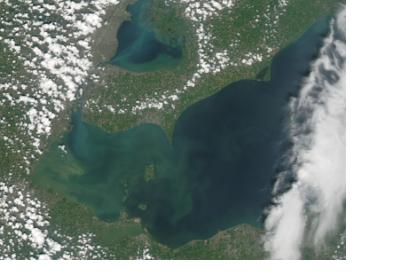Using a remote sensing technology that was originally developed for Mars exploration, NASA researchers are taking a closer look at algal bloom in Lake Erie in Northern America. Harmful toxic algal blooms can have a very negative impact on the environment, human health or the economy.
The hyper-spectral imager and miniature spectrometers are installed aboard an S-3 aircraft of NASA's Glenn Research Center. NASA explains in a press release: "Each aquatic component of the lake has a unique spectrographic signature. By studying these signatures, researchers can continually improve their ability to remotely identify the biochemical properties of an algal bloom and predict when and where they will form."
This air-borne remote sensing technique is a valuable alternative to optical satellites who might be influenced by varying weather conditions. The use of airborne remote-sensing instruments thus supplements satellite imagery and helps provide continual monitoring of algae blooms even when cloud cover is prevalent.
Once analyzed, the data collected through this research will be publicly available to those with an interest in algal blooms.

